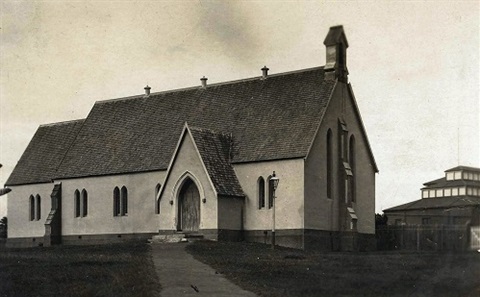The Anglican Church

Christ Church (Anglican Church) is one of the oldest and most recognisable buildings in Kiama.
The first church in Kiama was built in 1843 - a wooden structure on the southeast corner of Bong Bong and Manning streets. It was the Anglican Church as well as the Anglican Denominational School, and was large enough to house 125 people.
The church was known as the 'Inside Out Church' because it appeared to have no outside walls (the studding and framework could be seen on the outside). It was built from cedar, which was plentiful in the area at the time.
Prior to this, in the years leading up to 1833, services were conducted by Rev. Thomas Kendall and were held outside under the big fig tree on Black Beach, and in barns and on the verandahs of private homes.
Rev. Frederick Wilkinson was appointed in 1833 to look after the area from Wollongong all the way down to Sussex Haven. The trip from Wollongong to Kiama would take him 15 hours on horseback across very rugged terrain.
In 1850, Kiama became its own Anglican Parish, and Rev. Dr. James Barnier was appointed as the first rector, covering the area all the way down to Sussex.
The construction of the second Christ Church commenced in 1856 at a new site, on 'Church Point' at the east end of Terralong Street (the current location). The site of the original church was considered too noisy - the constant pounding of the waves at nearby Surf Beach (known then as Priest's Beach) would disrupt the services.
The new church was opened in January 1859 and Rev. Foster Barker was the rector. It was built of blue metal rubble donated by Joseph Pike from his property. It was then plastered over on both the inside and outside walls to protect it from the damaging storms that hit Church Point.
The pews and the gallery were built of cedar. The arched cedar timber ceiling was added in 1872 and has the appearance of an inverted ship hull.
The church contained a harmonium that was imported from England, rather than an organ. A pipe organ was erected in 1914, by German organ builder Ernst Ladigast.
The Soldier’s Memorial Tower was added to the church in 1922, and the entrance porch is now part of the tower.
The small cemetery behind the church contains the grave of First Fleeter James Gowen, and this was another reason this site was chosen. Records show there are five people buried there.